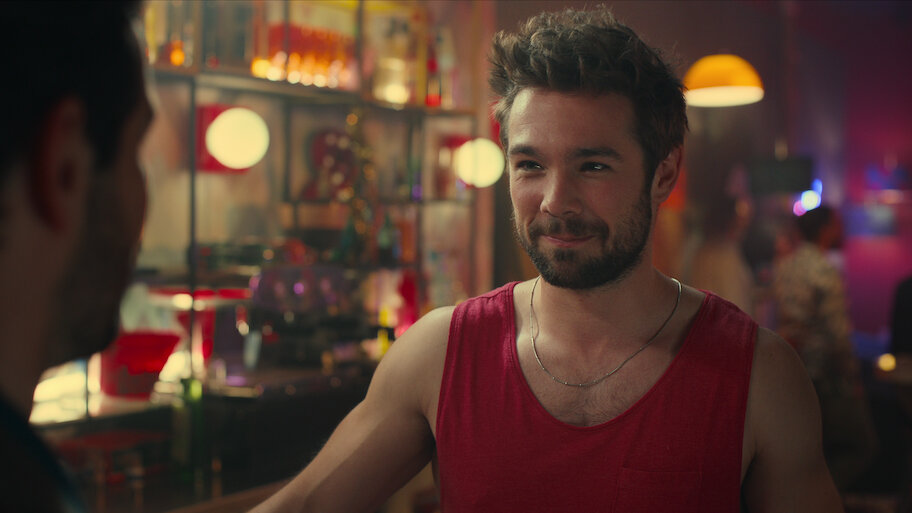Smiley is a 2012 American slasher-horror film directed by Michael J. Gallagher, blending the urban legend formula with modern internet culture. The story revolves around the concept of an online killer named “Smiley,” a masked figure who can be summoned through a sinister internet ritual. According to the legend, if someone types the phrase “I did it for the lulz” three times in an online chat, Smiley will appear and murder the person on the other end of the conversation. The film explores the dangers of anonymity on the internet, the spread of viral myths, and the fine line between online pranks and real-life consequences.
The plot follows Ashley (Caitlin Gerard), a college student struggling to adjust to a new life after moving in with her free-spirited roommate, Proxy (Melanie Papalia). Initially skeptical, Ashley becomes curious about the Smiley legend after hearing about it at a party. Encouraged by Proxy and a group of friends, she decides to test the myth, only to witness what appears to be an actual murder through her computer screen. Disturbed and convinced the killings are real, Ashley becomes obsessed with proving Smiley’s existence. Her quest for answers leads her into a dark spiral of paranoia, where she questions whether she is being targeted—or losing her grip on reality.
One of the film’s defining features is its attempt to merge the structure of a classic slasher movie with the digital age’s fears and communication habits. Instead of a remote cabin or an abandoned asylum, the threat emerges from the glow of a computer screen, making the danger feel more immediate to a tech-savvy generation. Smiley himself is portrayed as a haunting figure with a grotesque stitched smile carved into his mask, a design meant to evoke both fear and a sense of surreal menace.

Thematically, Smiley engages with issues such as cyberbullying, trolling culture, and the psychological effects of spending too much time immersed in online communities. It raises questions about the accountability of internet users, the way people can hide behind fake identities, and how urban legends can spread rapidly in the digital era. These themes, however, are sometimes overshadowed by the film’s reliance on jump scares and traditional horror beats.
From a visual standpoint, the movie uses dark, enclosed settings and flickering computer screens to build an atmosphere of claustrophobia. The score by Dave Porter complements the tension with an eerie, minimalistic soundscape, though the film’s horror elements rely heavily on sudden reveals and quick bursts of violence.

Reception to Smiley was largely negative from critics, who found the premise intriguing but felt the execution lacked depth and coherence. Nonetheless, it gained attention in online horror communities, partly due to its viral marketing campaign and its appeal to fans of internet-based horror myths like Slender Man. Over time, the film has developed a modest cult following among viewers who appreciate its attempt to bridge traditional horror tropes with 21st-century fears.
Ultimately, Smiley is a cautionary tale about the blending of urban legend and online culture, showing how quickly the boundary between virtual and real-world horror can dissolve.


